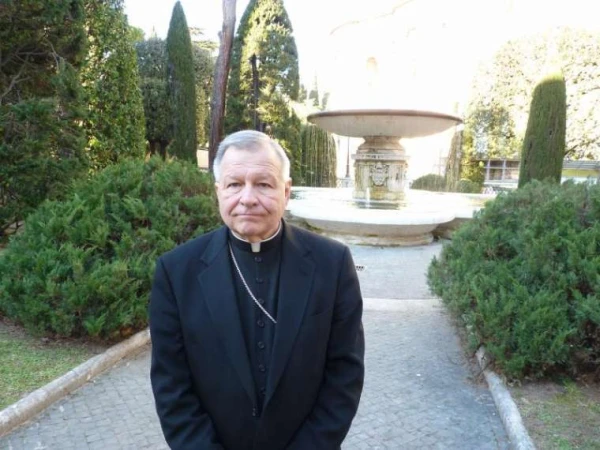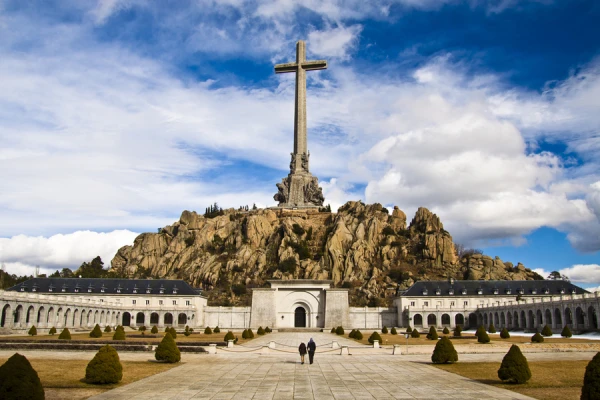
Denver Newsroom, Oct 27, 2020 / 02:45 pm (CNA).-
While allegations against two New Orleans-area priests have again raised questions about the Church’s response to clergy misconduct, the Archdiocese of New Orleans has confirmed that for the past two years it has been seeking to laicize clergy who have been removed from ministry for credible reports of sexual abuse.
“In the Archdiocese of New Orleans, very soon after the publication of the 2018 Clergy Abuse Report, conversations began in an effort to seek the laicization of those living clergy that had been removed from ministry for abuse of a minor and this is in process,” Sarah McDonald, communications director at the New Orleans archdiocese, told CNA Oct. 26.
“This is a highly technical canonical process and clergy have canonical rights that must be respected.”
On Oct. 1. the archdiocese announced the removal from ministry of Father Pat Wattingy, who on that day self-reported sexually abusing a minor in 2013. The archdiocese said the priest admitted the abuse after undergoing psychological treatment and going on a spiritual retreat this summer, the New Orleans CBS affiliate WWL-TV reports.
The St. Tammany Parish Sheriff’s Office investigated and then issued a warrant for the priest’s arrest on four counts of molestation of a juvenile, alleged to have taken place between December 2013 and December 2015. He was arrested as a fugitive at his home in West Point, Georgia on Oct. 22 and extradited to Louisiana.
“Mr. Wattigny stated that he knew he had warrants in Louisiana but that he did not know that we would catch him,” said the West Point Police Department’s incident report on the arrest.
The priest faces additional controversy concerning allegations that he sent inappropriate text messages to a minor at a Catholic high school where he was recently chaplain.
In Pearl River on Sept. 30, 37-year-old priest Father Travis Clark, recently the pastor of Sts. Peter and Paul Parish, has been charged with obscenity after he was discovered filming himself in sex acts with two women on the altar of the parish church.
A local resident told police they noticed the lights were on in the church and looked through the windows, discovering the three people. One of the women is reported to be a self-avowed satanist. Archbishop Aymond has since performed a penitential rite required for continued use of the church for sacramental purposes.
Both Clark and Wattigny have been asked to “seek laicization immediately,” McDonald told CNA. If the priests do not request to be laicized by the Vatican, each could be laicized as the result of a formal canonical trial.
“The removal of Clark and Wattigny from priestly ministry marks the first time Archbishop Aymond as Archbishop of New Orleans has had to remove an active clergyman from ministry for abuse or scandal.” McDonald said. Aymond became New Orleans’ archbishop in August 2009.
While priests who are found by a canonical process to have committed an act of serious sexual abuse can be laicized, or removed from the clerical state, other priests who have been credibly accused of abuse but not found guilty in such a process remain clerics, even if they will not be returned to priestly ministry.
Under canon law, a priest or deacon has the right to housing and minimal financial support if he has not been formally laicized, even if he is not eligible for priestly ministry. Dioceses have sometimes been criticized for payments to priests accused of abuse but not laicized, even while the diocese is canonically obliged to make some provision for them.
In addition to those laicized after a canonical penal process, priests can also be laicized at the discretion of the Vatican if they request it, or if the diocesan bishop makes such a request under limited circumstances established by the Vatican’s Congregation for Clergy in 2009.
The Archdiocese of New Orleans did not offer specifics about its efforts to laicize priests accused of abuse.
At least seven diocesan priests on the archdiocese’s list of 72 credibly accused clergy are still living, according to the New Orleans Advocate. This list does not include accused religious clergy who are under their religious orders’ jurisdictions.
In the New Orleans archdiocese, benefits to accused priests had included retirement benefits, until a federal judge overseeing its Chapter 11 bankruptcy said that the archdiocese could only pay for health insurance.
Archbishop Aymond held a day of prayer, fasting and atonement on Friday, Oct. 23 and encouraged the Catholic faithful to participate, especially those feeling wounded.
“We know that it’s been a very challenging time in our archdiocese, for a number of reasons, especially because of the news we have received recently about two of our priests who have not fulfilled their vocation,” he said in an Oct. 19 video at the archdiocese’s YouTube channel.
“It is important that we come together as a community of faith and pray for the wounds of our Church: personal wounds and the wounds that so many are feeling at this time, with a sense of disappointment and betrayal,” he said.
“I’m asking you specifically to enter into fasting if you wish to, to enter into prayer, and we are providing for you a Litany of the Sacred Heart of Jesus, which helps us to get into the heart of Jesus, to give him our suffering, and to ask him for the healing and peace that he alone can give,” said the archbishop.
“Let us also pray for all the victims of abuse. They need our prayers and support as we reach out to them,” he said.
On Oct. 16, Aymond met with all the archdiocese’s priests regarding the scandal caused by the two priests.
The Council of Deans and the Presbyteral Council, both composed of leading priests in the archdiocese, wrote an Oct. 16 letter on behalf of the 335 priests of the archdiocese. While acknowledging that some have questioned his leadership, the letter voiced the clergy’s support for the archbishop.
The letter gave an account of the meeting, reporting an “open and honest dialogue” with the archbishop followed by time together in prayer before the Blessed Sacrament, then a collective renewal of their ordination promises by the archbishop and the clergy together.
“He exhorted all of us to pray regularly for victims of sexual abuse. At the end of his remarks, all of us present stood in unanimous support of Archbishop Aymond,” said the letter, which the archdiocese carried on its website.
“We emphatically support Archbishop Aymond and his leadership of our local church,” the priests’ letter continued. “Archbishop Aymond is a dedicated, faithful, and holy priest of Jesus Christ. He has always faithfully served the people of God throughout his priesthood.”
“While the archbishop did not create the problems of sexual abuse, he has always courageously addressed the issue,” said their letter. They characterized Aymond’s decision to publish a list of credibly accused clergy as a “bold step.” In their view, the archbishop has acted quickly to any new allegations
“While the last few years have been difficult, we believe that his leadership is helping to shed light on the darkness of the past, to heal past wounds, and to renew the Church in New Orleans,” said the letter.
“Although a small number of priests have betrayed us and you, we commit ourselves and our lives wholeheartedly to the mission of Jesus Christ made present in the Church,” said the priests. “Be assured that the Church cannot and will not tolerate any sexual abuse or misconduct on the part of any cleric.”
Before his arrest on an obscenity charge and removal from ministry, Father Clark had been named to fill Wattigny’s role as chaplain at John Paul II High School in Slidell, Louisiana. Wattigny had resigned from the faculty in July.
The details of Father Wattigny’s recent misconduct involving texting are still in dispute.
On Oct. 2, Aymond told the principal of John Paul II High School that Wattigny allegedly sent inappropriate texts to a male student.
Although the student’s parents and attorney first alerted the archdiocese in February, school administrators were allegedly not told, and Wattigny was allowed to remain in ministry at the school until the end of the academic year.
According to a letter written by Aymond to parents of the school, reported by the Advocate, the texts did not contain “sexual references or innuendo” but still violated the archdiocesan policies about communication with youth.
The priest was reportedly admonished by archdiocesan officials to stop sending texts but permitted to remain in ministry at the school. He remained chaplain until he sent additional texts to at least one student and was reportedly sent by the archdiocese for a psychological evaluation.
Bill Arata, an attorney for the student, has said the priest’s texts had the aim of grooming the teen. Among other things, the priest asked the student repeatedly when he would turn 18. The priest texted the boy late at night, the attorney said, and his texts contained suggestive remarks. The attorney said he was told in June that the priest was being sent for a psychological evaluation. He said sending the priest for an evaluation confirms that the archdiocese knew the texts were not appropriate.
In an Oct. 9 statement, Aymond said Wattigny would never again serve in public ministry, and defended an archdiocesan decision not to remove Wattigny from the school when reports that he was sending inappropriate text messages first arose in February.

[…]




